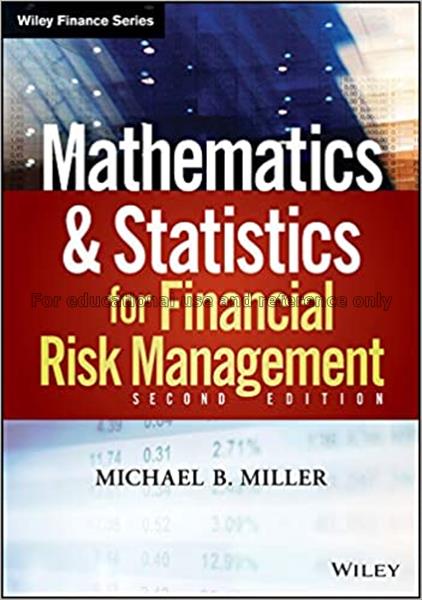Mathematics and statistics for financial risk management / Michael B. Miller
Author : Miller, Michael B

"In chapter 1, there is a review three math topics -- logarithms, combinatorics, and geometric series - and one financial topic, discount factors. Emphasis will be given to the specific aspects of these topics that are most relevant to risk management. In chapter 2, the author explores the application of probabilities to risk management. There is also an introduction to basic terminology and notations that will be used throughout the rest of the book. In chapter 3, Miller teaches how to describe a collection of data in precise statistical terms. Many of the concepts will be familiar, but the notation and terminology might be new. This notation and terminology will be used throughout the rest of the book. In chapter 4, some of the most common probability distributions will be pointed out, followed by a chapter on two closely related topics, confidence intervals and hypothesis testing. For risk management, these are possibly the two most important concepts in statistics. Chapter 6 provides a basic introduction to linear regression models. At the end of the chapter, Miller explores two risk management applications, factor analysis and stress testing. The final chapter is on a class of estimators, which has become very popular in finance and risk management for analyzing historical data. These models hint at the limitations of the type of analysis that we have been explores in previous chapters. This book has a lot of charts and equations"-- Provided by publisher
| Barcode | Call No. | Volume | Status | Due Date | Total Queue | |
|---|---|---|---|---|---|---|
| 1010080119 | CF00007 | Available | 0 | Please Login |
Related Book